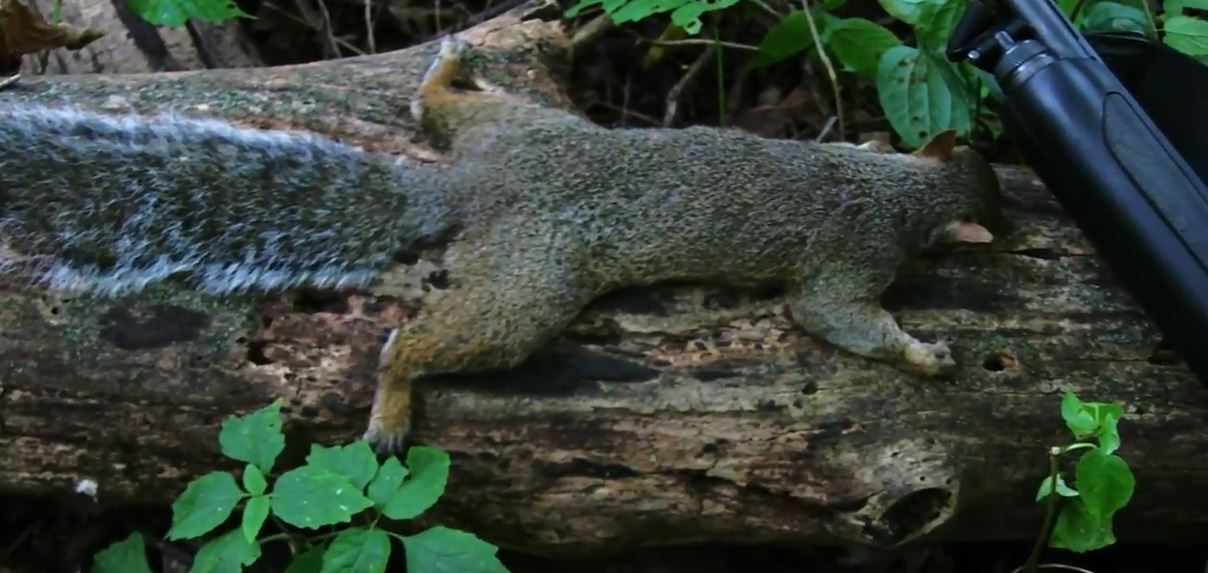Squirrel Trapping: How To Trap A Squirrel

Squirrels are one of the most common nuisance wildlife and they can be found across the United States. Because they are excellent climbers, jumpers, and diggers, these small mammals can easily enter your home through a small gap, even if the closest tree to the entry point is several feet away. If you have already tried exclusion or repellents and those methods didn't work, then you will want to consider trapping the squirrel and relocating it. You should always do this in a humane way and opt for a live trap as well as carefully consider the relocation site.
Trap Types
Before you can begin to trap a squirrel, you need to select the right trap type. The most common varieties of live, humane traps are single animal traps, repeater traps, and one-way exclusion doors. If you are looking to kill the squirrel, then you could theoretically use a body grip trap instead. These were traditionally used by fur trappers and will instantly kill the squirrel by crushing or choking it. You should avoid them as they are difficult to use, dangerous, and can be painful for the squirrel if not used instantly.
Instead, it is best to always opt for a live trap to give the squirrel a chance to live in a new location. The majority of do-it-yourselfers and wildlife control companies will select a single animal version of the live cage trap. These are typically metal cages that you place bait in. The squirrel will step on a trip pan, which causes the door to shut. There are multiple variations available, but you always want to make sure that the squirrel will fit inside, meaning the majority will be 5 inches wide and high and 16 inches long. Live traps that are too small will allow the squirrel to escape while those that are too large may give the squirrel room to injure himself.
Professionals will also frequently use repeating or repeater live cage traps. These are designed to hold multiple squirrels at once, making them perfect for larger infestations. A repeater trap functions via a one-way door that will let squirrels enter without leaving, which is why you can catch several squirrels. Although not technically a trap, you can also try a one-way exclusion door, which is designed to work like the repeater trap, but is open on the end so the squirrel can simply go to another nearby area of its choice. This method shouldn't be used if your home is damaged or has potential squirrel entry points.
Squirrel Bait
Squirrels are technically omnivores and while it is true that they will eat some small animals and insects, the best bait tends to be herbs, tender fruit, seeds, grains, or nuts. When baiting your squirrel trap, consider using nuts, sunflower seeds, peanut butter, almond extract spread on bread, cereal grains, apples, popcorn, or a few drops of anise oil on bread. Remember to place the bait far enough inside the trap that the squirrel cannot reach it from inside and that the animal will enter the trap completely, triggering the door to close.
Placing The Trap
Once you have selected your trap and bait, it is time to put it in the correct location. For the best results, you want to place the trap somewhere the squirrels will pass on a regular basis. The ideal spot would be by an area the squirrels forage or along their entry path. In the case of repeater traps that use one-way doors, you can attach them directly outside the entrance to your home. For this method to work, you will want to first seal up the other entry and exit points so the squirrels can only leave through the one covered by the trap.
Step By Step
The basic method of trapping squirrels is fairly straightforward. You will select a trap, bait it, place it in the correct spot, and check it regularly for the squirrels. Remember not to leave the trap in an area exposed to strong sun or other elements without checking it every few hours as this could be considered torture for the squirrels. Select a location to release the squirrel that provides it with food, water, and shelter, preferably at least 4 or 5 miles from your home.
You will also want to take the time to check for baby squirrels before beginning the trapping process. If babies are present, you should ideally wait until they are old enough to move on their own or contact a professional for assistance.
Cautions Against Trapping And Relocation
In addition to avoiding trapping squirrels if babies are present, you also want to check the legalities in your area. Each city and state has its own regulations and in some cases you can trap and relocate a squirrel yourself while other times you will need a permit or license for at least one of these actions. In other cases, you may even need to hire a professional trapper to take care of the squirrel for you.
Read the How to get rid of squirrels page for helpful information and to learn more about Squirrel Trapping: How To Trap A Squirrel

